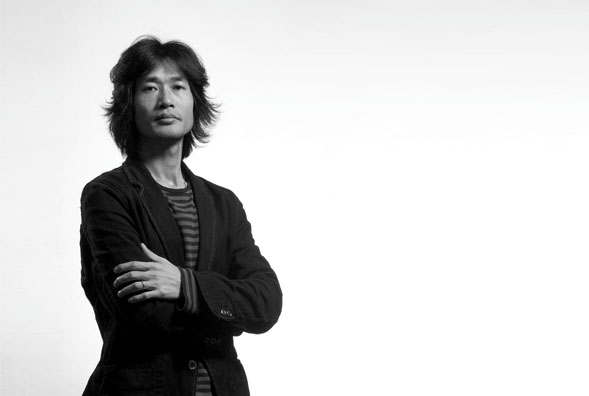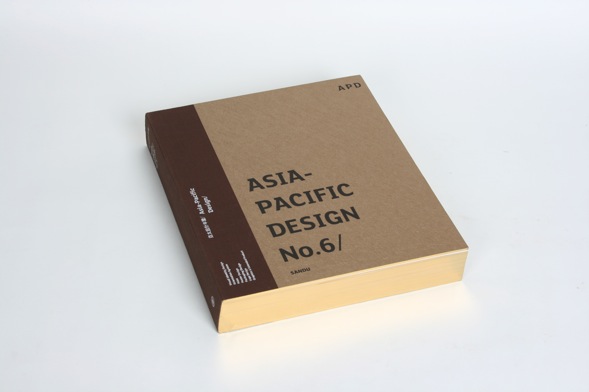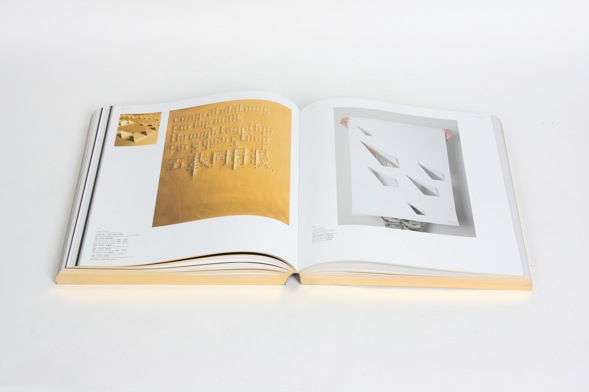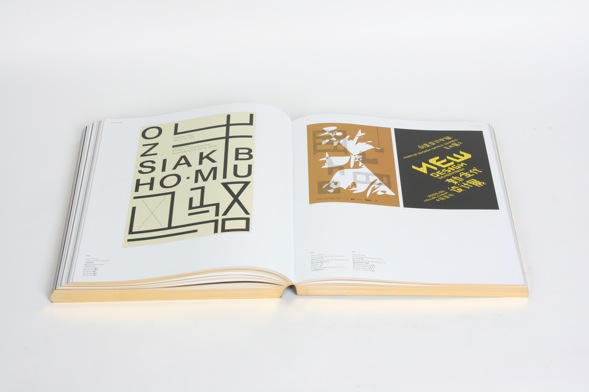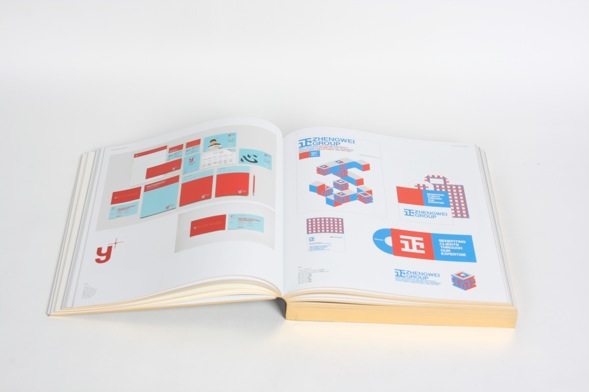Wang Shaoqiang is Founder and Chief Editor of Design 360° Magazine. He publishes an annual design journal called Asia Pacific Design. He is also Chief Executive of Sandu Media and the publisher for Asia Pacific Design Journal which gathers leading design works from China and throughout Asia. Here he shares his insights into the evolution of design in China. The interview is available in both English and Chinese.
The Columnist (TC): Why did you start Sandu Media and what is its purpose?
Wang Shaoqiang (WS): Sandu Media was formed in 2001. Back then, China was undergoing high economic growth and most Chinese designers and agencies were focused on creating their own designs. We started out solely as a design firm. However, I noticed that the country was in need of a platform on which designers could interact and exchange ideas. Because of this, I gradually repositioned Sandu to be more involved in the communication and publishing of design work.
At that time, Mr. Wang Xu was also actively involved in this area. He was of great influence and drove me to start Sandu Media and develop a platform for designers to exchange ideas.
TC: What is the role of Asia Pacific Design and what is the vision behind this publication?
WS: Asia Pacific Design (APD) had its roots with the founding of Sandu Media. 2012 will be its eighth year of running. I aim for the annual publication to be a platform for discussion amongst designers in Asia Pacific. Each year, we call for contributions from designers in China and across the region. The annual publication functions as a historical archive, recording good designs from each year as well as highlighting the outstanding business and cultural designs. APD also aims to demonstrate the creative abilities of forward- thinking designers and agencies. With this in mind, APD keeps its foundations with original designs from China but also incorporates the influence of design works from across Asia Pacific. We aim to create a publication that shapes the design industry in China.
Over the past thirty to forty years, design in China has taken off alongside the country’s economic development and hence is attuned to society’s trends and needs. Aligned with the current social status within China, APD maintains the intentions set when it was established eight years ago, and continue to act as a window for communication between Chinese and global designers. This should also hold for the future as APD strives to continue expanding its reach, growing along with designs from China.
TC: As an observer and curator, how do the Chinese view design nowadays?
WS: With the reforms and liberation of China, design has also entered a new era of development. Inevitably, the development of Chinese designs now face new challenges. For example, the people’s perceptions towards design, as well as its influence on the economy, culture and society as a whole. A balanced evaluation can only be made by historians further down the road.
What does design bring to the people? This is a discussion that has received varied responses over time. For example, designs used to focus on creating economic value, satisfying business’ demands. But today, it has become an active part of the people’s lives. Its impact on public policies and the development of cities should not be overlooked. In modern China, design is only at its initial stages of development. Alongside the sustained economic growth, design is bound to create a broader and further-reaching impact on society.
The Chinese are still nurturing their appreciation for design. There are a handful who have a clear idea, and some who are receptive of it but others might not yet have a deep understanding. I believe that this understanding will improve over time, and the impact of design on the community will form a consensus amongst the people. Design would bring new opportunities to all walks of life, especially in the manufacturing sector.
TC: What has changed in the Chinese design scene in the last 5 years and what can we expect?
WS: Over the last 5 years, the Chinese design scene has clearly experienced steadfast development. Heavy public spending has fuelled the progress of Chinese design. The 2008 Beijing Olympics as well as 2010’s Shanghai Expo and Asian Games in Guangzhou presented the industry with many new opportunities. It brought together designers across different fields and promoted the integration of resources. The importance of interaction and cooperation in design was also increasingly recognised.
One should note that Chinese designs are also gaining popularity in several areas of lifestyle. Upon establishing a strong economic foundation, it will progressively be possible to achieve a better quality of life through design.
TC: Can you name 2 emerging designers in China and why their work will change the industry?
WS: The first would be Guang Yu of Beijing. He is a representative of cutting edge design, and is mainly engaged in the cultural aspects of design. Beijing is the country’s centre of culture and arts, providing designers an excellent environment for growth. Guang Yu is able to tap into the city’s rich culture and incorporate it into his work.
Another would be Chen Fei Bo from Hangzhou. He has a passion for design and love for life. He is an acute observer of market movements and can be considered a “generalist”, creating designs that can be applied to multiple aspects of our daily lives. This includes diningware, fashion, furnishings and other products. His designs are consistent with life and the market’s needs. Chen demonstrates the viability of integrating different types of design.
TC: China is going through another transition in its political leadership, can design play a role in the development of China?
WS: Definitely! Currently, China is focused on manufacturing and has become a leading consumer in the world. But, in China, there is still a lack of strong brands, good design and quality products. In the future, design will become more important to this country. The government is also placing stronger emphasis on this and people are gradually becoming aware of the power of design.
TC: If you could have tea with Vice-President Xi Jinping, what would you say in order to update him about design in China?
WS: I do not think I would be given the opportunity to have tea with Vice-President Xi Jinping. But, if given the chance, there are two things I would like to share with him. Firstly, I would update him on my research data to show him the impact of design as reflected in our country’s GDP growth. Secondly, I would like to share with him the positive influence of design on the people’s lives, in terms of how it has improved the environment and raised the quality of living, making a contribution to a more energetic and positive society. These are the two things I would like to share with Vice President Xi Jinping.
—–
为什么开创三度文化传媒,其目的是什么?
三度文化传媒成立于2001年,当时在中国,大多数设计师和机构从事设计服务的工作,三度的前身也同样是做设计公司的。因为中国正处于商业的高速发展期,大家都忙碌着各自做设计,交流和沟通相对比较缺乏。我意识到中国缺乏一个这样的平台,便希望做一些转变,重新定位公司的方向,渐渐开始关注设计的传播、出版等方面的工作,投身设计文化传播的领域。王序在这之前也从事这方面的工作,我也受了他的很多影响,因而便着手组建三度传媒,希望这里能成为一个设计交流的平台。
《亚太设计年鉴》对设计界所起到的作用以及年鉴背后的愿景是什么?
《亚太设计年鉴》在三度文化传媒成立之初便开始策划,至今已历经八年。我把这本年鉴定位为一个亚洲太平洋地区设计交流的平台,每年出一本,通过向中国及亚太地区的设计师征集作品,像一本历史档案集,记录下一些优秀的设计,表彰这些优秀的商业及文化类设计,展示当下思想前卫的设计师及设计机构的创作力量。秉持着这个信念,APD从中国的整体原创设计力量为起点,放眼亚洲及太平洋地区的广阔设计天地,致力打造一本引领中国设计的年鉴。
中国设计的发展只历经了伴随着经济腾飞短短的三、四十年,适应于现今经济社会的设计很符合当今社会的发展,也符合中国的现实。基于中国社会的现状,APD在过去的8年来一直坚持这策划时的初衷,现已成为中外设计交流的窗口。未来也将继续做下去,希望APD这个平台能继续深化,伴随着中国设计的成长。
作为从业多年的设计师及媒体人,当今中国设计师如何看待设计?
随着中国改革开放,设计也进入一个高速发展的阶段。自然地,设计的发展过程也历经考验,例如人们怎么看待设计,设计与经济、文化、社会的关系等等方面的问题,都有待历史给予公正的评述。
设计给人们带来了什么?在这个问题上,答案也一直在改变。比如一开始商业设计只在经济发展层面满足商业上的需求,到了今天,商业设计也已经全面渗透到人民日常生活中,甚至在政府决策、城市发展的方面也有不可小觑的影响。今天的中国,现代设计还处于发展初期,随着经济的持续发展,设计必将给社会带来更宽广、深远的影响。
中国国民对设计的认识还处于培育期,有部分人有清晰的认识、部分人能接受、部分人不了解。我相信这种认识会慢慢发生改变,设计对社会的影响也将在大家心中形成共识。对各行各业,特别是制造业,设计将带来新的可能。
在过去的5年中,中国设计界有着什么样的改变?对于未来,我们可以期待什么?
在过去的5年中,中国设计在不断向前发展,取得的进步是大家有目共睹的。中国有巨大的政府项目,这些能给设计起了推波助澜的作用。例如08年奥运会、10年世博会和亚运会,这些大型的活动给设计带来很多新的可能。设计师及设计团队的跨界合作,整合了很多资源,互动合作的必要性也备受关注。另一方面,中国设计对生活方面的兴趣日益浓厚,具备了一定经济基础后,对更美好的生活追求也成为可能。
您可以列举2个中国新锐设计师以及为什么他们所从事的工作会对推动这个行业发生变化?
第一个是北京设计师广煜。他是新锐设计师的代表,主要从事文化方面的设计。北京是全国的文化、艺术中心,给设计师的创作提供了很好的土壤。广煜在这当中开展他的设计创作,能很好利用这个平台,发挥地域的特点,将这种文化上多样性体现在作品中。
第二个是杭州设计师陈飞波。他抱有一份对设计的执着,热爱生活,敏锐地洞悉市场的动态。他是个“多面手”,从事的设计涵盖生活多个侧面,包括餐具、产品、服装、家具等等。紧贴生活,紧贴市场,让不同类别的设计实现融合的可能。
中国正在面临过渡到新一届的政治领导,设计是否在中国的发展中发挥作用?
这个问题的答案是肯定的。目前中国以制造业为主,是一个消费大国,但在中国缺少品牌,缺少好的设计、好的产品。在未来,设计将越来越在中国彰显出其重要性。这一点,政府也日益重视,国民也渐渐意识到设计的力量。
如果您在跟国家副主席习近平喝茶,关于中国设计现状,您会如何告诉他?
我猜我应该没有机会和习近平副主席喝茶吧。如果有,关于中国的设计现状,我想和他提2个方面:第一,我会给他展示一些我的数据调查,有关反映设计给GDP的增长带来多大的影响;第二,设计给国民生活带来的可爱的一面。设计如何改善生活的环境、提高生活的质量,对社会的积极正面的作用……以上两点,便是我希望与习副主席交流的内容。
This interview was conducted for The Columnist, a newsletter by Consulus that offers ideas on business, design and world affairs.

